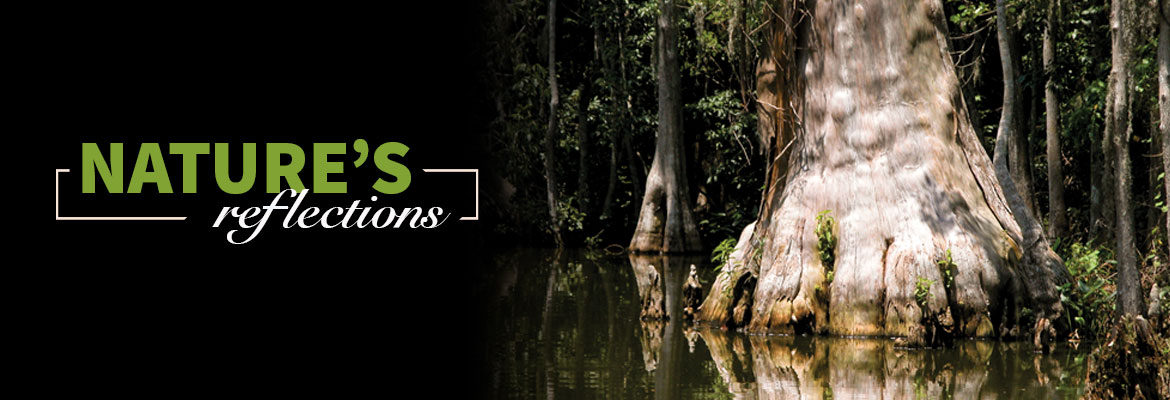Nature’s Reflections – Florida’s Cypress Trees
Beautiful conifers and beneficial wetlands trees
Two types of cypress trees are found throughout Florida. The massive bald cypress (Taxodium distichum), grows to 150-feet tall and more than six feet in diameter. It is believed to be the largest tree in North America east of the Rockies. It has small, flat, feathery-like leaves growing on both sides of horizontal branchlets. Leaves and small round cones shed in the fall, hence the name “bald” cypress.
Pond cypress (Taxodium ascendens) is somewhat smaller with needle-like leaves that wrap tightly around the twigs. It is also deciduous meaning it sheds annually. Both trees are known for their “knees” and wide buttressed or fluted trunks that add support. Knees are a part of the root system which grows above the soil and varies in height. Some experts believe the knees supply oxygen to the roots of the trees and serve as support to anchor the tree in wet environments. Typically, pond cypress have fewer knees and are less buttressing than bald cypress trees. Both like full sun, acidic soils, easily adapt to wet or dry conditions and live for hundreds of years.
Typically, bald cypress grow in and along flowing water, while pond cypress is more limited to still or slow-moving water. Pond cypress grown in soils poor in nutrients experience slower growth, giving the trees a stunted or dwarfed appearance. These trees are often called dwarf cypress or hatrack cypress.
These are the classic trees of most southern swamps. They love wet areas and crowd out most other trees on such sites. Cypress swamps provide wildlife habitat and food, water recycling, flood control, excellent groundwater recharge and recreation in parks and preserves. Approximately five percent of Florida’s landscapes are dominated by cypress swamps.
Cypress lumber is prized for its durability, decay resistance, and appearance. Pecky cypress is simply the result of a
natural fungus (polyporus amarus) that causes voids to form in the wood. Today, harvesting of both varieties has increased to produce two major products: lumber and landscaping mulch.
Column & photo by: Sandi Staton






